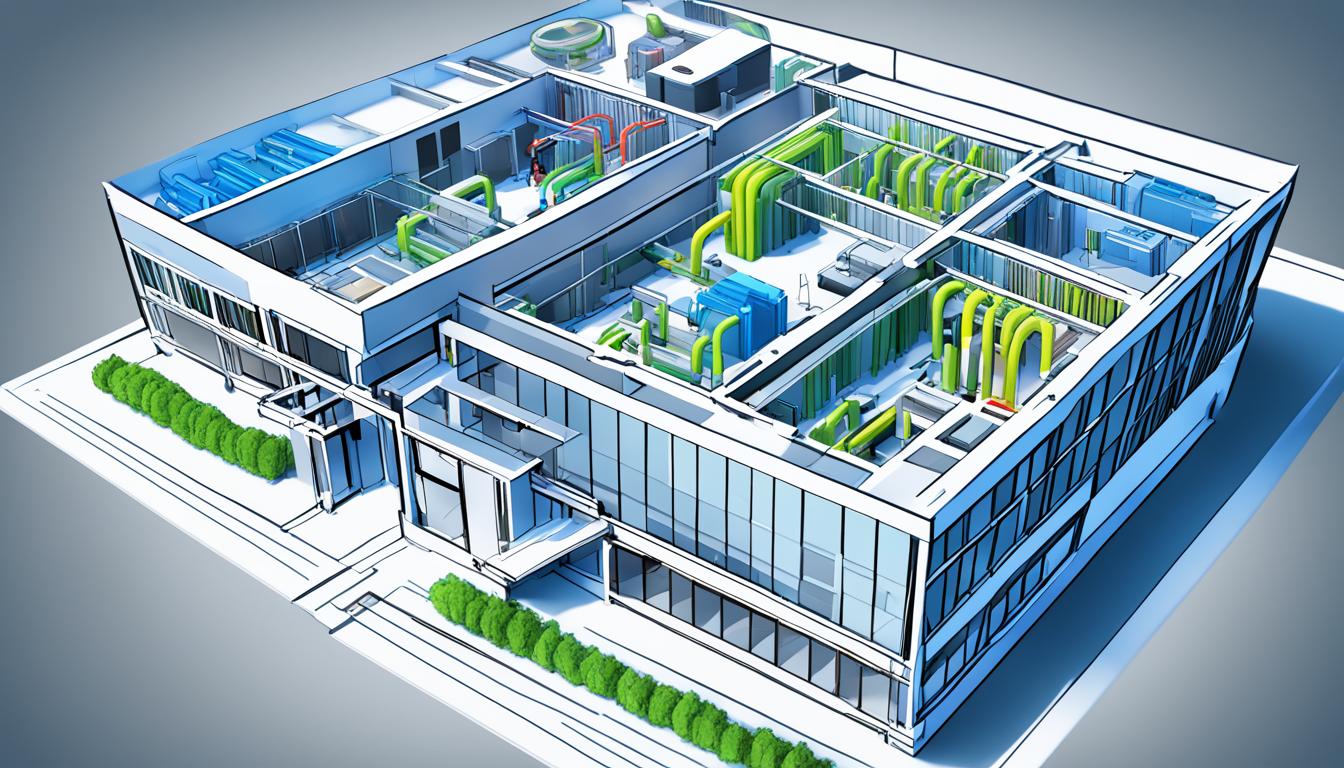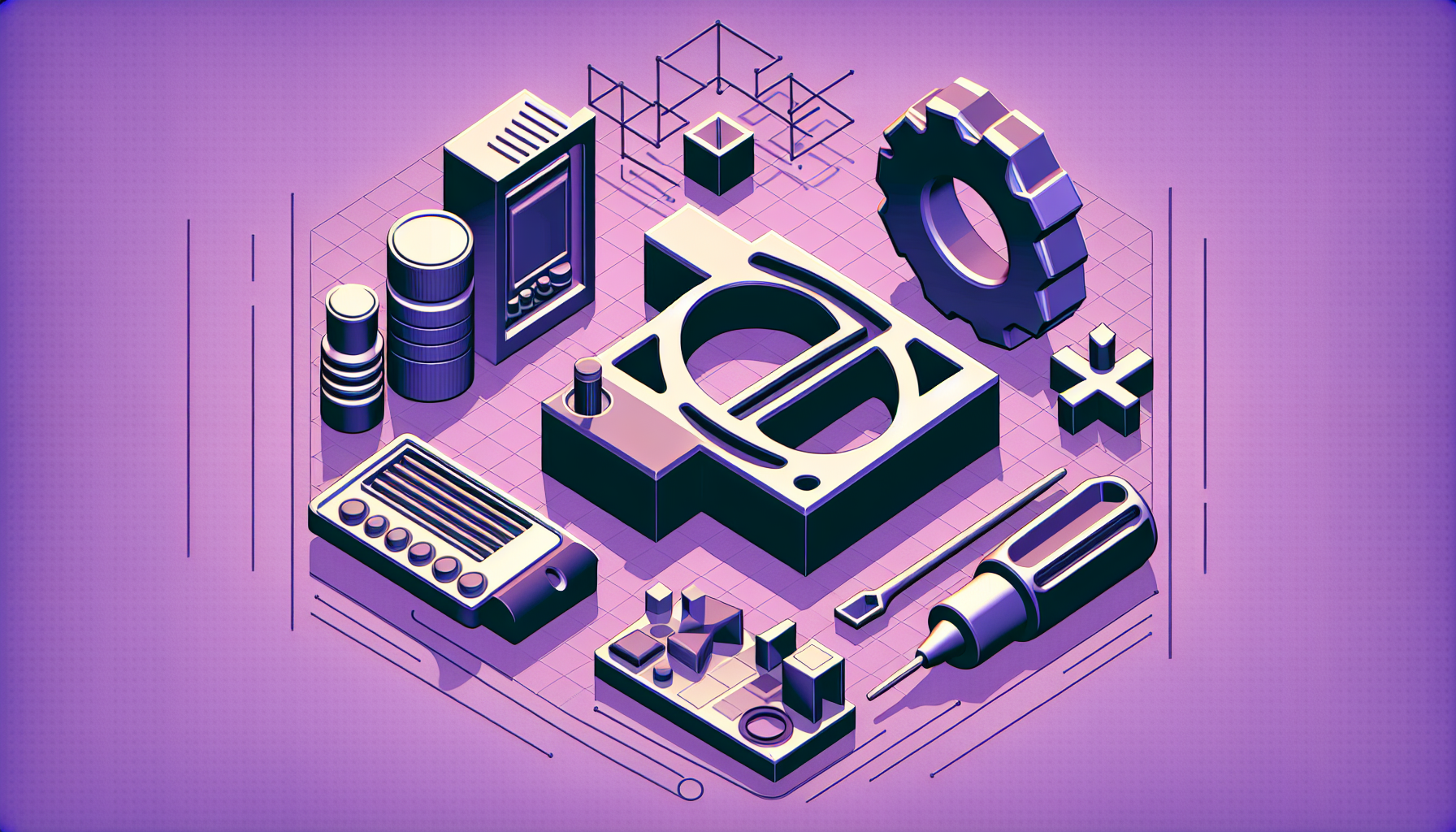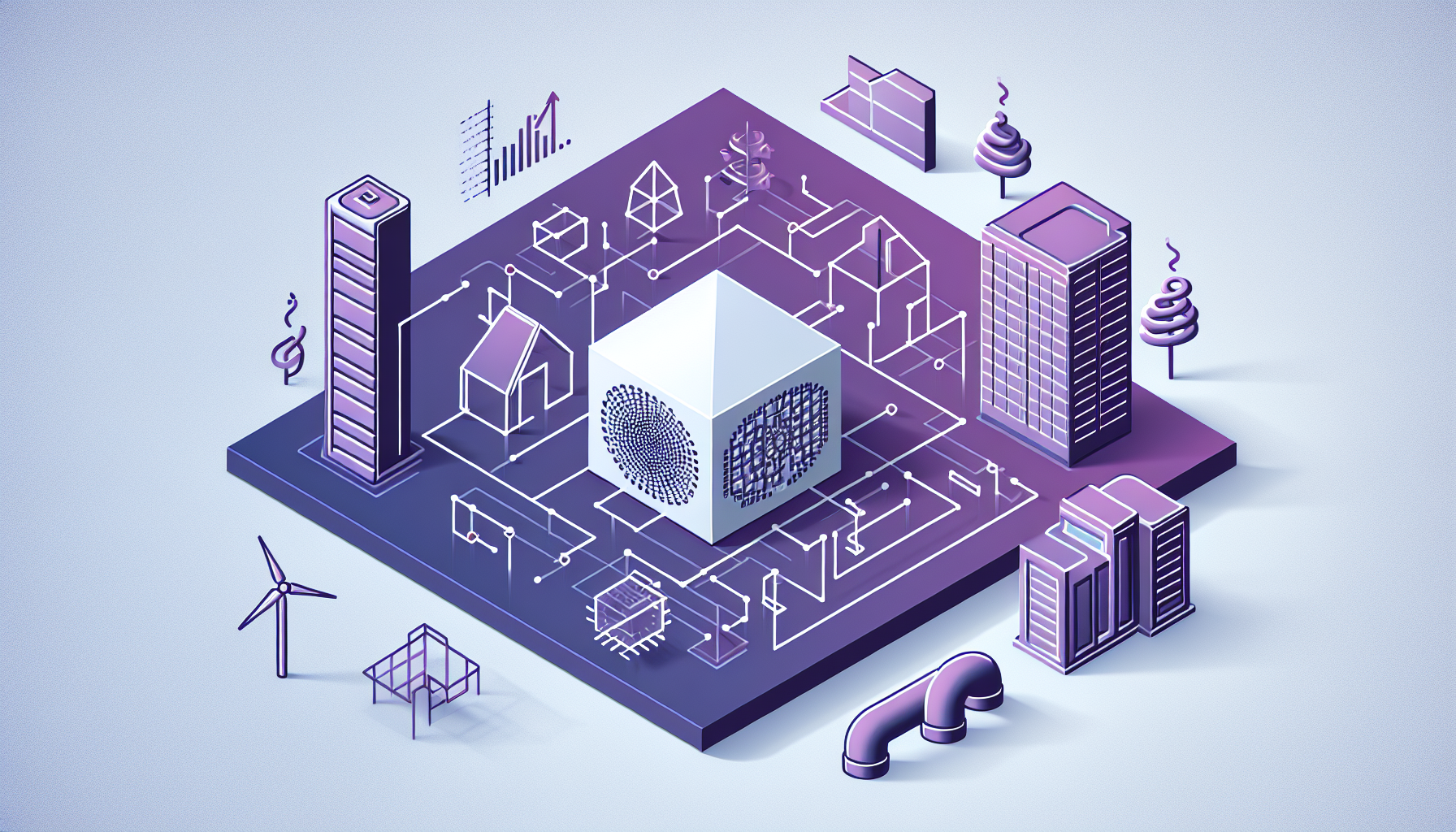Using 3D HVAC modeling and Building Information Modeling (BIM) can make project coordination better. These technologies change how we plan, design, and maintain buildings. They make the building process smoother from start to finish.
Creating detailed 3D models with lots of data helps with documentation and quickens production. BIM makes it easier for different teams to work together. This reduces mistakes and makes building faster.
Adding HVAC systems to BIM models changes how buildings are designed and run. It helps different teams work together better and avoids conflicts.
This article will show you how 3D HVAC modeling and BIM integration can change your project coordination. You’ll see how these tools lead to smoother workflows and better results in construction.
Understanding BIM and 3D HVAC Modeling in Construction
Construction technology has changed how we design and build buildings. Building Information Modeling (BIM) and 3D HVAC modeling have made projects more coordinated and efficient. Let’s look at these innovations and their effects on building today.
Defining Building Information Modeling (BIM)
BIM is a digital model of a building’s design and functions. It’s more than just 3D modeling. It’s a way to combine data, processes, and technology for better collaboration. Architects, engineers, and contractors work together smoothly using BIM.
The Role of 3D HVAC Modeling in Modern Construction
3D HVAC modeling is key in modern building projects. It helps plan and install heating, ventilation, and air conditioning systems accurately. Designers can see complex HVAC systems in 3D, reducing mistakes and boosting efficiency.
Benefits of Integrating BIM and HVAC Design
Combining BIM and HVAC design brings many benefits. Here are some main advantages of 3D HVAC modeling:
- Improved coordination among project teams
- Enhanced communication through visual representations
- Timely project completion due to early clash detection
- Efficient building management with collected data for maintenance
| Feature | Traditional Method | BIM-Integrated HVAC Design |
|---|---|---|
| Design Visualization | 2D drawings | 3D models with real-time updates |
| Collaboration | Sequential, often siloed | Simultaneous, integrated approach |
| Clash Detection | Manual, time-consuming | Automated, early-stage identification |
| Data Management | Separate documentation | Centralized information database |
Using these construction technologies can greatly improve project coordination. It leads to better results in your building projects.
The Impact of BIM on HVAC System Design
Building Information Modeling (BIM) changes how we design HVAC systems. It offers a detailed platform for looking at and analyzing systems. This leads to better design efficiency and performance.
BIM lets you deeply analyze HVAC systems before they’re installed. This means you can tweak designs for better energy use and less carbon emissions. By trying out different scenarios, you find the best HVAC setup for each building.
With BIM, sustainable design is easier. It helps add things like solar panels and geothermal systems to HVAC designs. This helps you meet sustainability goals and cut down on costs over time.
- Enhanced visualization of HVAC components
- Improved clash detection capabilities
- Accurate performance predictions
- Seamless integration of sustainable technologies
BIM also improves indoor air quality. It lets you check airflow, temperature, and humidity levels. This ensures buildings are comfortable and healthy places to be.
Using BIM for HVAC makes designs more efficient and buildings better overall. This technology lets you create systems that save energy and adapt to new needs and challenges.
Enhancing Collaboration with 3D HVAC Models
3D HVAC models change how projects work together. They make a space where teams can work well together. This leads to better communication and faster decisions.
Interdisciplinary Coordination Benefits
3D HVAC models help different groups work together better. Architects, engineers, and contractors see the whole system at once. This helps spot problems early and avoid mistakes.
This teamwork cuts down on errors, saves time, and reduces costs. It makes projects run smoother.
Real-time Communication and Data Sharing
Sharing data in real-time changes HVAC design. Teams get the latest info fast, cutting out delays and misunderstandings. This keeps everyone in sync, speeding up projects and making them better.
Streamlining Decision-Making Processes
3D HVAC models help teams make quick, smart choices. They can see changes and their effects right away. This makes getting approvals faster, reduces redo work, and leads to better results.
| Collaboration Aspect | Traditional Method | 3D HVAC Model Method |
|---|---|---|
| Communication Speed | Slow, often delayed | Instant, real-time |
| Decision-Making | Time-consuming | Rapid, data-driven |
| Conflict Resolution | Reactive, on-site | Proactive, pre-construction |
Using 3D HVAC models changes project coordination. These tools promote teamwork, improve communication, and boost efficiency in design and building.
Clash Detection and Resolution in BIM-Integrated HVAC Design
BIM-integrated HVAC design changes the game in construction by making clash detection automatic. It finds problems like ductwork and piping clashes early on. This way, you can fix issues before starting construction, saving time and money.
Tools for clash detection look at 3D models to spot where different parts might clash. They show where systems cross paths, making it easy to fix problems fast. This helps make building smoother and keeps projects on track.
Design optimization is a big win from clash detection in BIM. By finding and fixing conflicts early, you can make your HVAC designs work better. This means your HVAC systems will work well with the building’s structure, electrical, and plumbing.
Clash detection greatly improves construction efficiency. It cuts down on site problems, fewer change orders, and quickens setup. By solving issues in a virtual space, you save time and money during the actual build.
| Benefit | Impact on Project |
|---|---|
| Early conflict identification | Reduces rework and delays |
| Improved coordination | Enhances overall design quality |
| Optimized HVAC layouts | Increases system performance |
| Streamlined installation | Boosts on-site productivity |
Using clash detection automation in your BIM-integrated HVAC design leads to smoother projects and better results. This tech helps solve design problems and boosts construction efficiency and building performance over time.
Optimizing HVAC Performance through BIM Simulations
BIM simulations change how we improve HVAC systems. They let us check and boost efficiency, comfort, and air quality. Let’s see how BIM simulations can change your HVAC design process.
Energy Efficiency Analysis
BIM simulations make HVAC systems use less power. You can test different setups, like equipment and control methods. This helps you pick better options, cutting costs and harm to the environment.
Thermal Comfort Predictions
Thermal comfort analysis makes sure people are happy. BIM simulations show how temperature, air flow, and humidity change in a building. You can spot and fix spots that might be too hot or cold before building, making it more comfy.
Indoor Air Quality Assessments
BIM tools help check indoor air quality deeply. They simulate ventilation, pollutant levels, and how well filters work. This info helps design HVAC systems that keep indoor air healthy and meet rules.
| BIM Simulation Type | Benefits | Key Metrics |
|---|---|---|
| Energy Efficiency | Reduced energy costs, lower carbon footprint | kWh usage, HVAC load profiles |
| Thermal Comfort | Improved occupant satisfaction, productivity | PMV, PPD indices, temperature gradients |
| Indoor Air Quality | Enhanced health, compliance with standards | CO2 levels, particulate matter, VOCs |
Using these BIM simulations, you can make HVAC systems that are efficient and comfortable. This approach leads to better decisions and better building performance.
Improve Project Coordination with 3D Modeling and BIM
3D modeling and BIM change how we coordinate projects in construction. They create a single place for everyone to work together. This includes HVAC designers, architects, contractors, and facility managers. This leads to better efficiency and smoother project delivery.
BIM brings many benefits for improving project coordination. Teams can see complex HVAC systems in 3D. They can spot problems early and make quick decisions. This helps avoid costly changes and delays on-site.

One big advantage of 3D modeling is making detailed documents. Everyone can see things like equipment schedules and duct layouts easily. This helps the team understand and work together better.
Let’s look at how BIM makes project coordination better:
| Aspect | Impact on Project Coordination |
|---|---|
| Clash Detection | Identifies spatial conflicts between HVAC and other building systems early |
| Scheduling | Enables precise sequencing of HVAC installation tasks |
| Cost Estimation | Provides accurate material and labor cost predictions |
| Change Management | Facilitates quick updates and assessment of design modifications |
Using these tools, you can greatly improve project coordination and increase construction efficiency. The smooth blend of 3D modeling and BIM lets teams work smarter, faster, and together better at every stage of the project.
Leveraging BIM for HVAC Prefabrication and Installation
BIM technology changes how we do HVAC prefabrication and installation. It uses accurate 3D models and detailed specs to boost project efficiency and quality. This method lets us make HVAC parts offsite, cutting down on labor and making installation faster.
Here are the main benefits of using BIM for HVAC prefabrication:
- Improved quality control
- Less material waste
- Quicker project timelines
- Better safety on construction sites
Modular construction with BIM helps plan and coordinate HVAC systems precisely. You can spot and fix problems before they start on site, saving time and money. Making HVAC parts offsite means they’re made with more precision and consistency.
Using BIM for HVAC prefabrication makes the installation smoother. Teams work better together, cutting down on mistakes and redoing work. This leads to projects finishing faster and with better results. By using BIM for HVAC prefabrication, you’re not just making things more efficient. You’re changing how HVAC systems are designed, made, and put together in modern buildings.
BIM-Enabled Facility Management for HVAC Systems
BIM technology changes how we manage facilities, especially HVAC systems. It makes maintenance planning better, tracks equipment lifecycles, and watches energy use. Let’s see how BIM makes HVAC operations and maintenance better.
Maintenance Planning and Scheduling
BIM makes HVAC maintenance easier by giving detailed info and schedules. Managers can use 3D models to find equipment fast, cutting down repair time. This helps avoid downtime and makes HVAC equipment last longer.
Equipment Lifecycle Tracking
Tracking HVAC equipment with BIM is easy. It keeps track of when things were installed, their maintenance history, and how they’re doing. This info helps predict when parts need to be replaced, saving money and avoiding sudden breakdowns.
![]()
Energy Consumption Monitoring
BIM lets you watch HVAC systems use energy in real-time. Managers can see how much energy is being used, find ways to save, and cut costs. This leads to big savings and helps the environment.
| BIM Feature | Benefit for HVAC Management |
|---|---|
| 3D Visualization | Easier identification of HVAC components |
| Data Integration | Comprehensive equipment history |
| Real-time Monitoring | Immediate detection of inefficiencies |
Using BIM for managing facilities makes HVAC maintenance more efficient. It helps equipment last longer and uses less energy. This approach keeps HVAC systems running well for the building’s whole life.
Overcoming Challenges in BIM and 3D HVAC Integration
Using BIM and 3D HVAC modeling in construction can be tough. You’ll face many challenges. Let’s look at common issues and how to beat them.
One big hurdle is getting used to new technology. Many people are hesitant because they worry it will change how they work. To ease this, start with small projects. Show the good parts to build trust.
Another problem is when different software can’t talk to each other. Pick BIM tools that support open standards like IFC. This makes sharing data easier across different apps.
Training your team is key to making BIM work. Spend on good training programs. This helps them grasp BIM and use the software well.
| Challenge | Solution |
|---|---|
| Resistance to new technologies | Gradual implementation and showcasing benefits |
| Interoperability issues | Use of open standards (e.g., IFC) |
| Lack of skilled professionals | Invest in training and education programs |
| High initial costs | Focus on long-term ROI and improved efficiency |
Good communication is vital. Set up clear BIM rules in your company. This makes projects consistent and cuts down on team confusion.
By tackling these issues, you can make the most of BIM and 3D HVAC modeling in your projects. Remember, the benefits of better coordination and efficiency are worth the effort.
Conclusion
BIM and 3D HVAC modeling are changing the construction world. They bring big benefits like better project coordination and more efficient designs. Using these tools helps make HVAC systems better and improves building performance.
With BIM, HVAC design gets a boost. You can see how energy use and thermal comfort will be before you start building. This helps make better decisions and avoids costly changes later.
One big plus of BIM is how it improves project coordination. Teams work together better, share data easily, and solve problems fast. This means fewer mistakes and less time wasted, leading to projects that succeed.
Looking ahead, BIM and 3D HVAC modeling will be key in the construction world. They make buildings more efficient, sustainable, and perform better. By using these new technologies, you stay ahead in a changing industry.





0 Comments